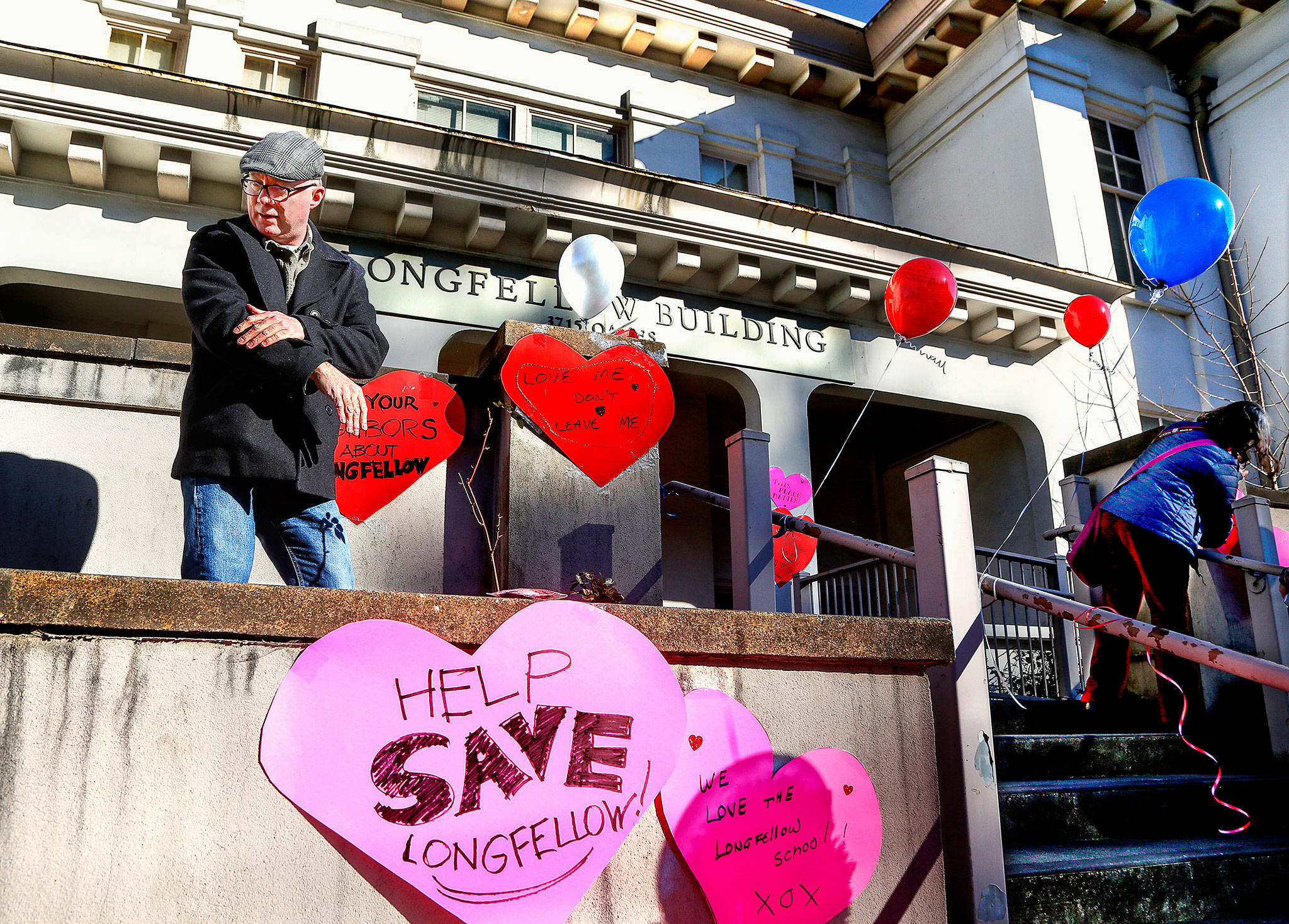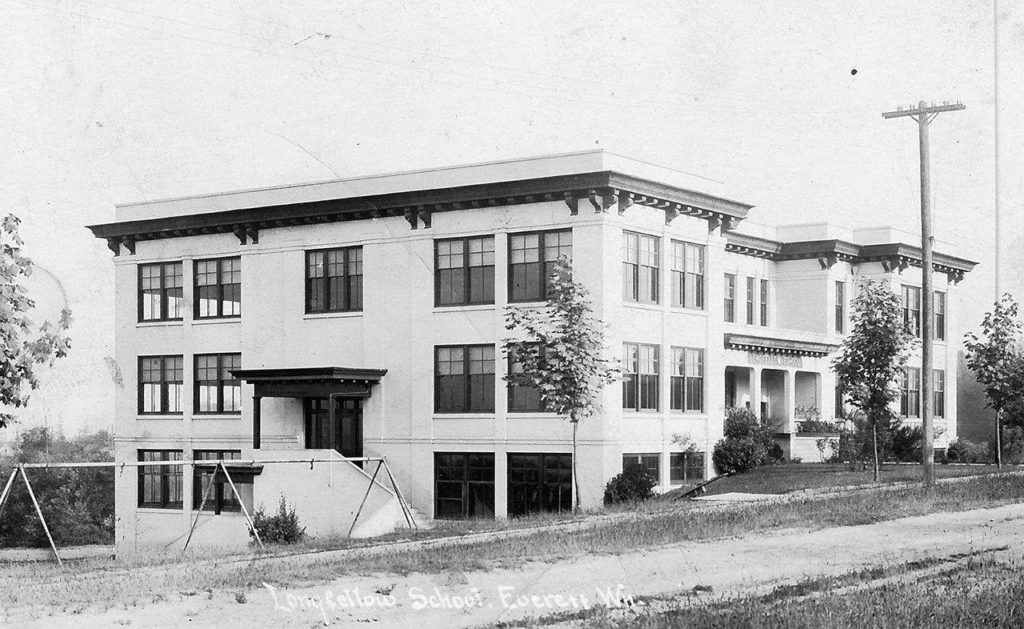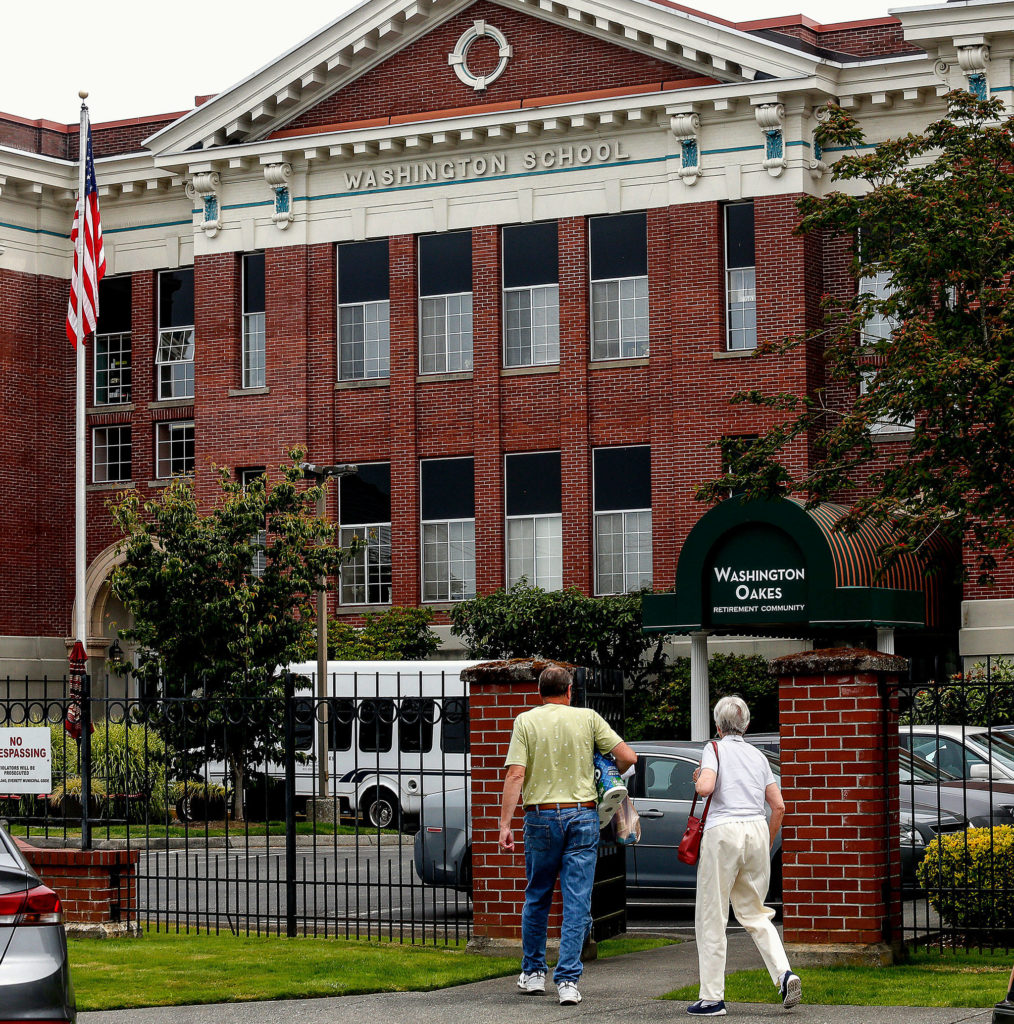Local history lovers’ crusade to save the old Longfellow school building now has a fighting chance. With a new task force weighing options for the Everett landmark, the school district will hold off with a wrecking ball for at least a year.
“The idea of spending $2 million to demolish a building to make a parking lot didn’t resonate,” said Ed Petersen, a former Everett School Board member and chairman of the Superintendent’s Longfellow Advisory Task Force.
The committee has 15 members — representing historical preservation, development and construction, local government and neighborhoods, school parents and other community interests — plus two Everett School District staff members and a facilitator, Jim Dugan of Parametrix, Inc., hired by the district.
Task force recommendations are due to Everett schools’ new Superintendent Ian Saltzman in June 2020, after the group investigates and analyzes “potential and preferred” uses of the Longfellow property, according to the district.
The district has planned for several years to tear down its Longfellow building, where the late U.S. Sen. Henry M. “Scoop” Jackson once walked the halls and went to class. The district’s aim has been to use the site next to Everett Memorial Stadium for parking.
Divided over the issue, the school board failed last July to pass a proposal to start demolition. The lowest bid for the work had come in at about $2 million, $660,000 more than district estimates.
Built in 1911, it was Longfellow Elementary School until 1971, and used for district offices until 2013. The district maintains that the building is in poor condition, and says on its new task force webpage that the old school needs “significant interior, exterior, mechanical, electrical, structural, ADA and life safety reinvestments.”
Petersen, chief strategic officer of Housing Hope and HopeWorks Social Enterprises, has overseen renovations of historic properties now used for that agency’s low-income housing.
“There’s no guarantee we can figure out an answer,” to saving the old school, Petersen said Tuesday. “It’s not going to be simple and it’s not going to be inexpensive. Whether there will actually be a good solution, we’ll have to see.”
People involved in local historical efforts have put their hearts into seeing the building spared. On March 1, history lovers and former Longfellow students showed up at the old school at 3715 Oakes Ave. to stage what preservationists call a “heart-bombing.” They taped big paper valentines — decorated with “Help Save Longfellow” and other slogans — to the outside of the three-story white edifice.
Patrick Hall, a board member of the Historic Everett preservation group, and Andrea Tucker of Everett’s Port Gardner Neighborhood Association were involved with the heart-bombing, and are now members of the Longfellow task force.
At an early March meeting, the Everett School Board heard from eight people who spoke in favor of saving the building. Along with Hall, those speakers included Petersen and Larry O’Donnell.
Like Petersen’s, O’Donnell’s viewpoint carries weight. His 30-year career was spent with the Everett School District, as a teacher, vice principal, principal and building program leader. He also attended Everett schools.
Petersen said he and O’Donnell “have prominent histories with Everett Public Schools,” and that their opinions were likely influential when the board voted once again in March to hold off on tearing down the Longfellow building.
“Not everybody in the school district is so enamored with history,” Petersen said. In the Mill Creek area, he noted, school issues center on new construction and crowding at Jackson High. “I just felt like in Everett we care about history, and it matters.”
Peterson cited two former Everett schools as fine examples of redevelopment and repurpose. The Washington Oakes retirement community in north Everett is the former Washington School, and what was once Roosevelt Elementary School is now New Life Church. “These buildings now are part of our history, serving wonderful needs and wants in our community,” he said.
Petersen knows it can be done. Housing Hope’s first shelter project, 31 years ago in Everett, was the renovation of what’s now the agency’s Crossroads Apartments at 35th Street and Norton Avenue. That building, bought by Housing Hope in 1988, was once the private home of Frank Friday, who built it on land he bought in 1892 from the U.S. government — for $1.25 an acre, Petersen said.
And Housing Hope’s Commerce Building, a 1910 beauty on Hewitt Avenue, provides homes to those in need in single-residency rooms and small apartments. Petersen said tax credits — for housing, green buildings or historical projects — are available to help with financing.
“One of the things I want to do is study school buildings in the Puget Sound region that have been preserved — study how they got financed, as well as for good perspectives,” he said.
Mike Gunn, the district’s executive director of facilities and operations, said the impetus for the task force “really came from comments to the board, made over the last year or so regarding the future of the Longfellow building.”
The new group represents “a wide range of experiences and personal histories,” Gunn said.
“The war isn’t over, but we’ve won some battles,” said Hall, who believes having the measured views of Petersen and O’Donnell helped put the brakes on the tear-down. “This building is proven to have nine lives,” Hall added.
Petersen is putting his faith in the collective wisdom of task force members. The group hasn’t met yet, but six to eight meetings are suggested on the district website. “Creative minds can come up with some phenomenal concepts,” he said. “I’m hopeful we can find a good use.”
He won’t be the decider, though.
“The school board always has the ultimate authority on what to do with school district property,” Gunn said.
Julie Muhlstein: 425-339-3460; jmuhlstein@heraldnet.com.
Talk to us
> Give us your news tips.
> Send us a letter to the editor.
> More Herald contact information.




























